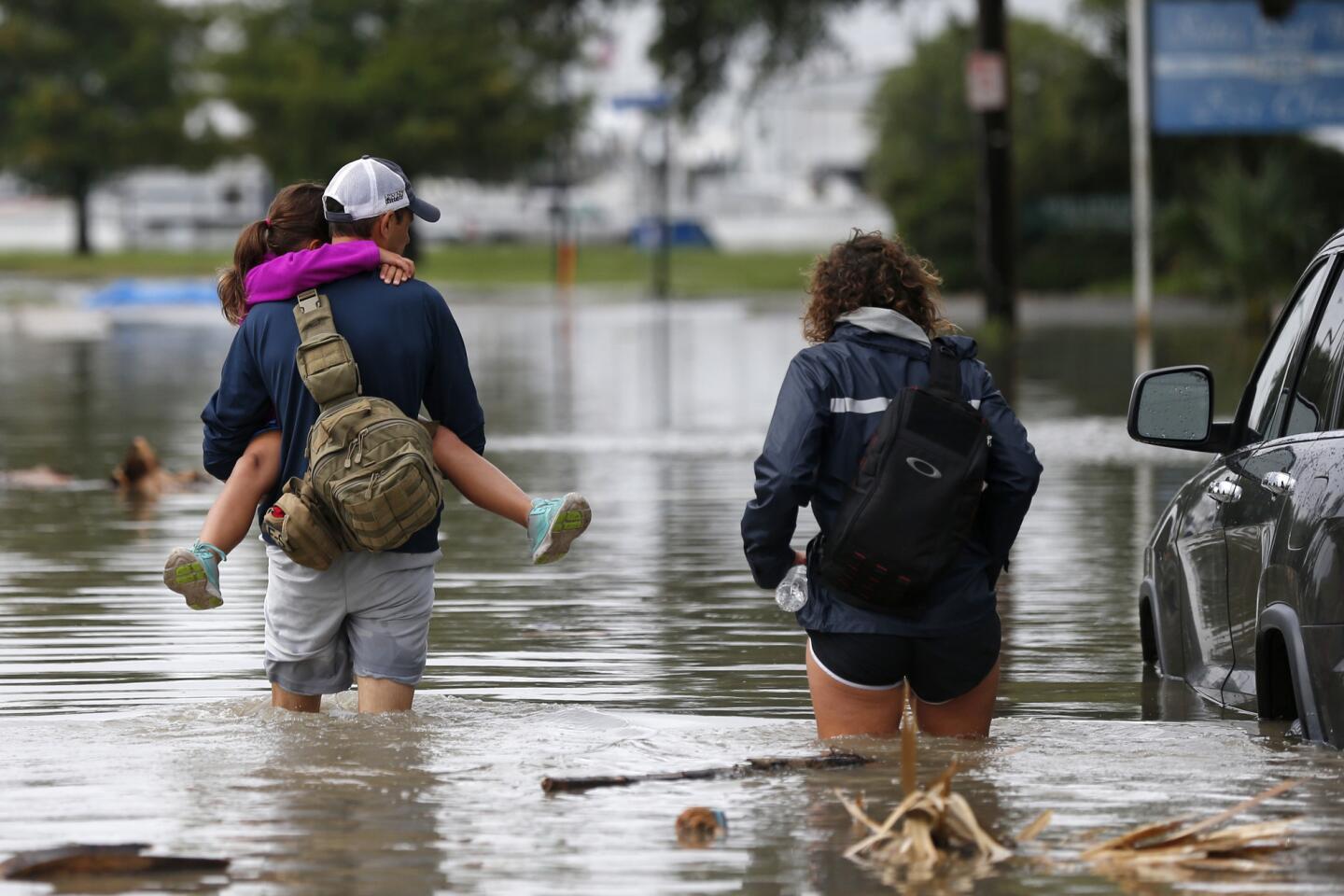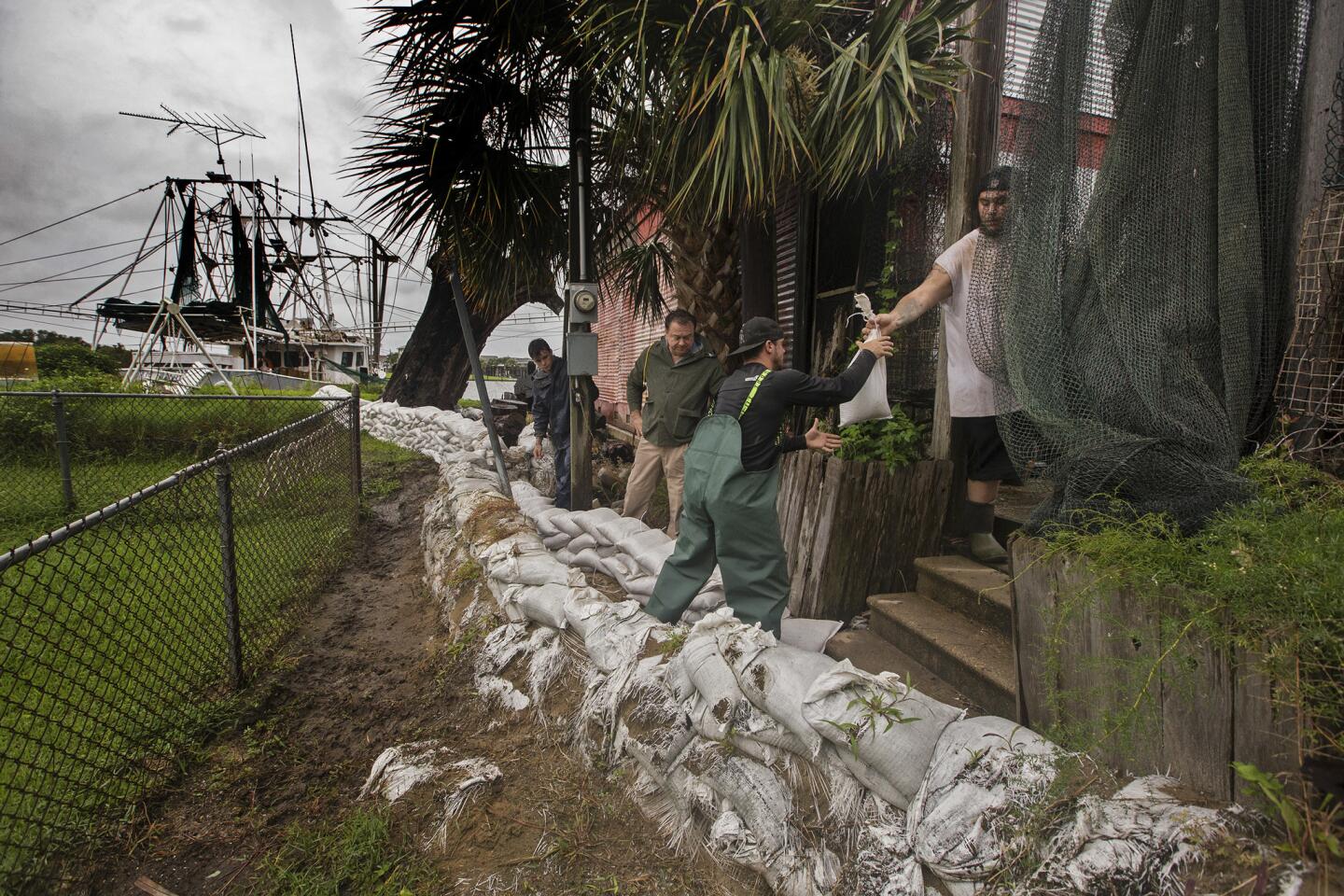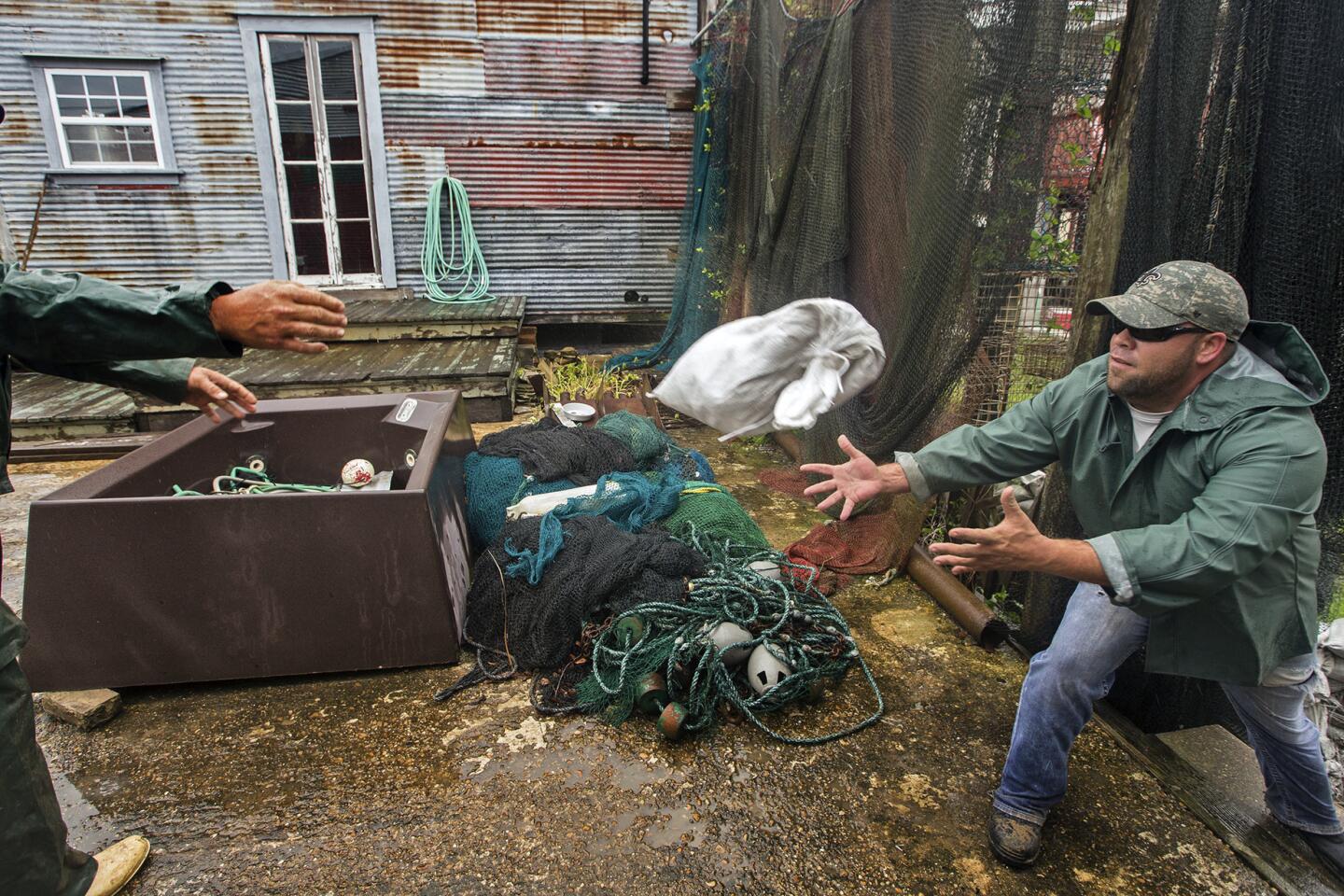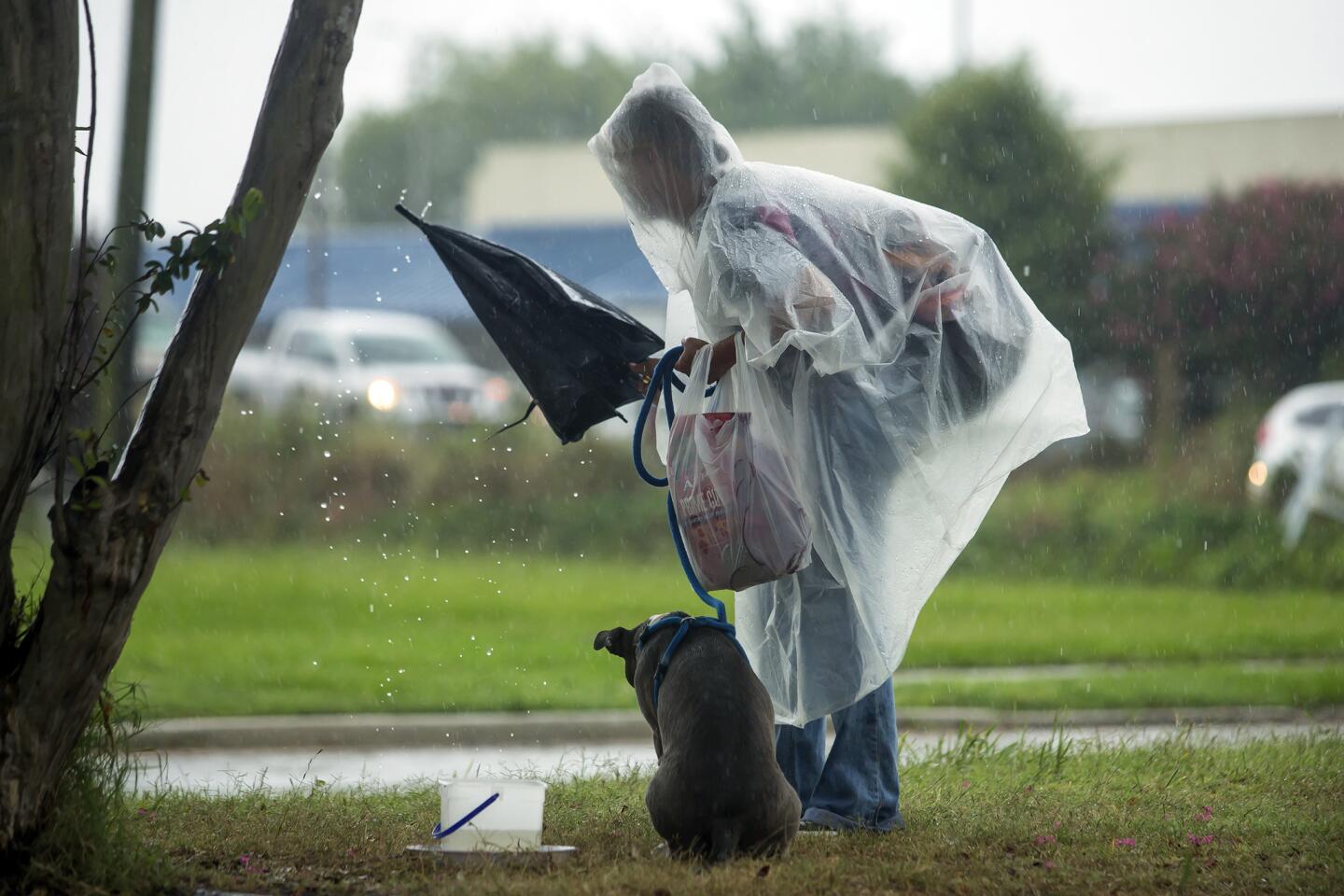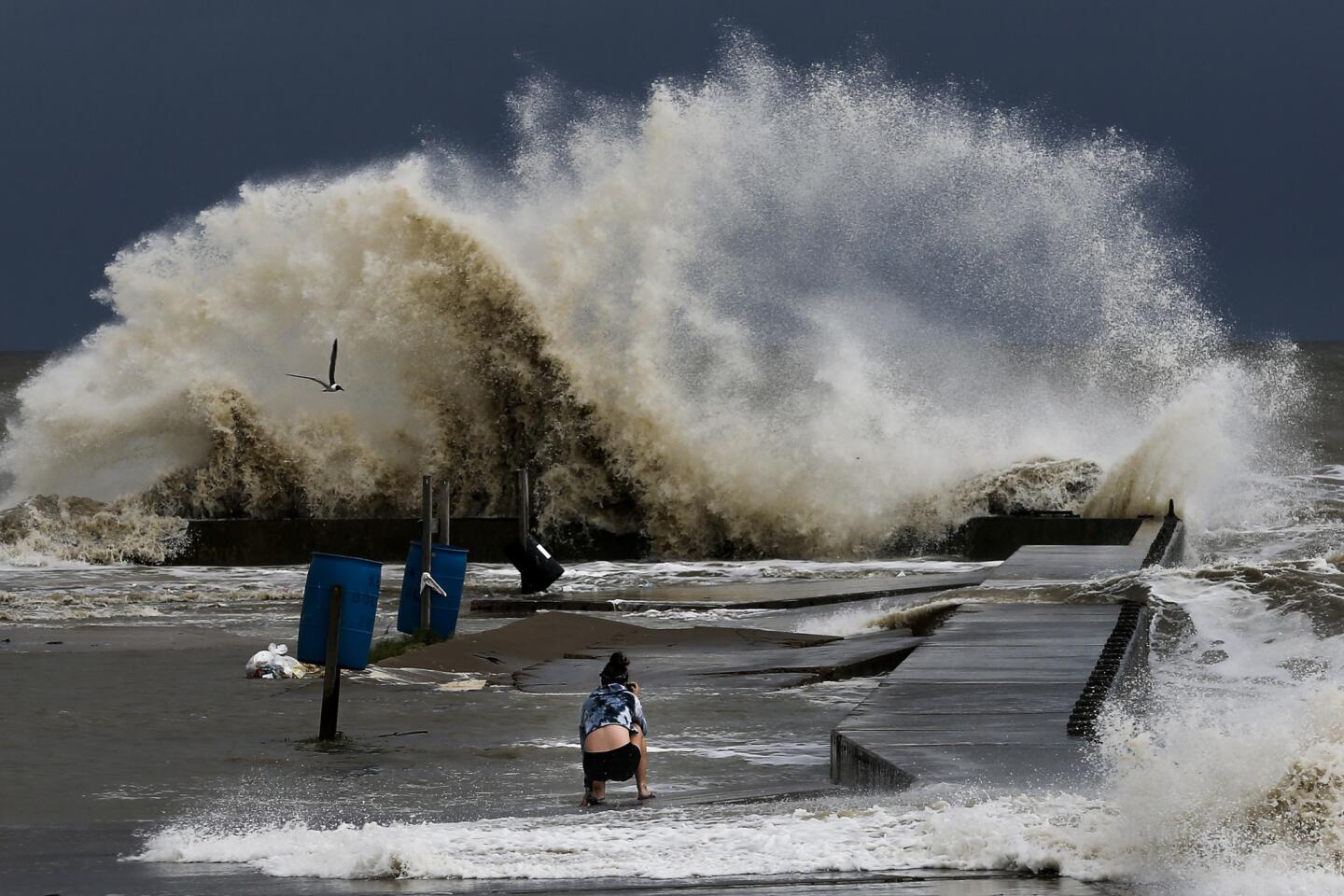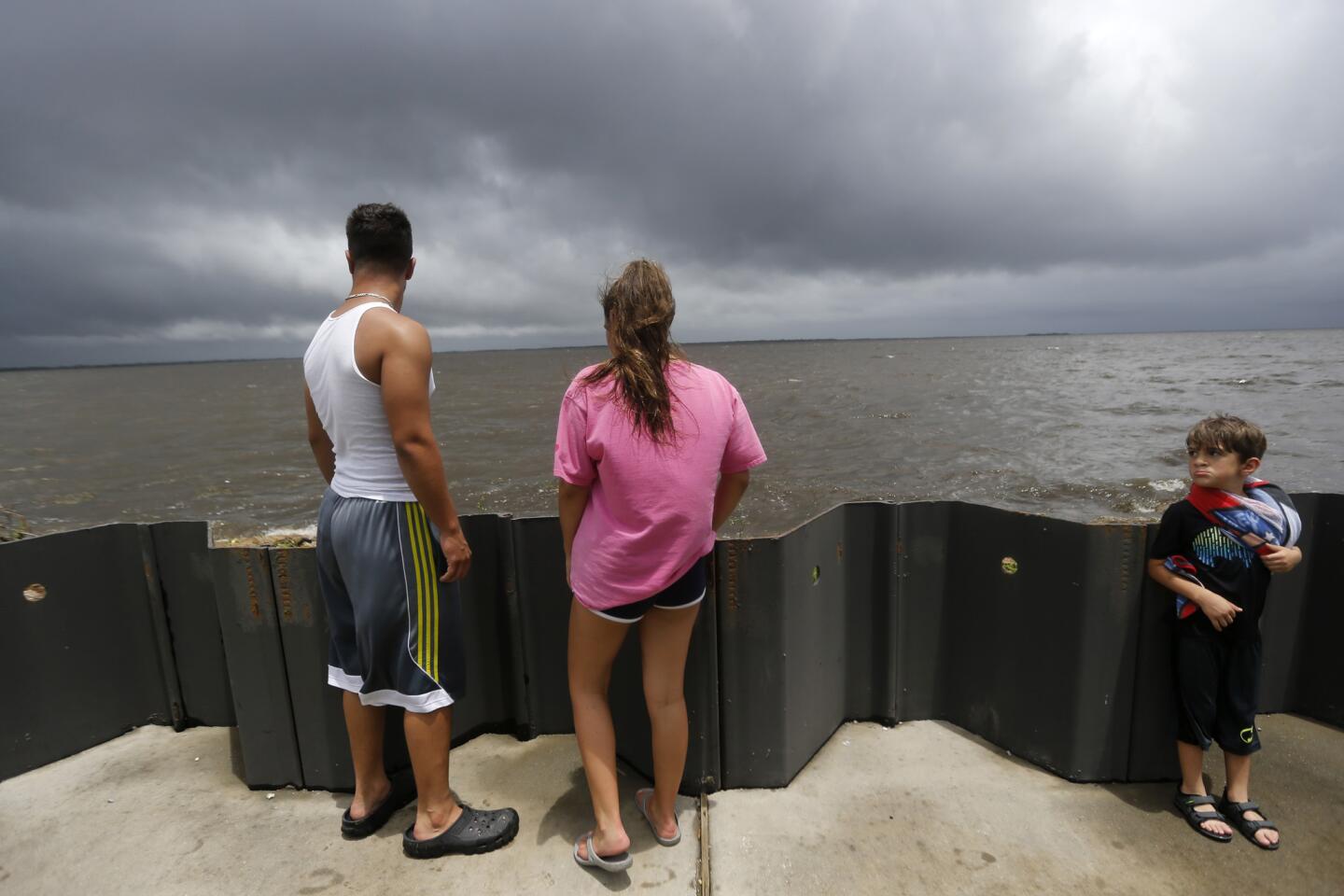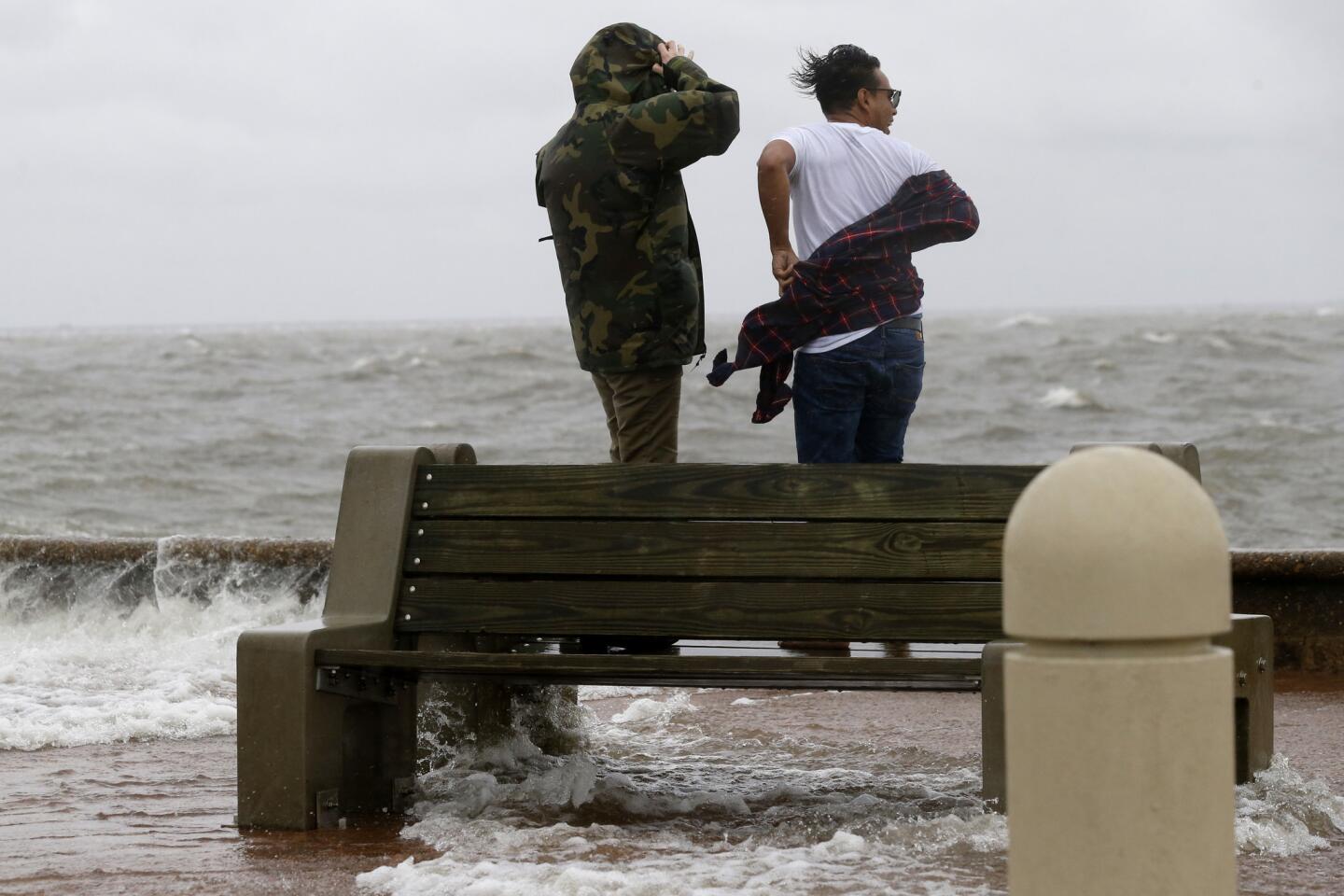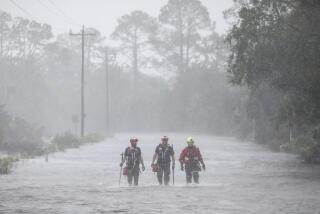Tropical Storm Cindy claims a life as the northern Gulf coast prepares for heavy flooding
Tropical Storm Cindy has taken the life of a 10-year-old boy on the Alabama coast. It was the storm’s first known death.
The boy, whose name wasn’t immediately released, was standing on the beach in Fort Morgan, Ala., when he was struck by a log that was washed in by storm surge Wednesday morning, authorities said.
Cindy, a sprawling storm whose effects were stretching out far beyond its center of circulation, was in the Gulf of Mexico approaching the Louisiana-Texas border on Wednesday afternoon. It was expected to make landfall late Wednesday or Thursday.
Much of the northern Gulf coast, from Houston to the mouth of the Mississippi River, was under a tropical storm warning on Wednesday, with Cindy’s maximum winds at 50 mph.
A tropical storm warning means that tropical storm conditions are expected, in this case between 12 to 24 hours, according to the National Hurricane Center in Miami.
But the story of Cindy wasn’t necessarily the wind, but the rain and its potential to cause life-threatening floods, forecasters say.
According to the National Weather Service, flash flood warnings were in effect from eastern Texas through the western Florida Panhandle. A portion of that area, however, which included New Orleans to the Florida Panhandle, was no longer under a tropical storm warning.
Because of the lopsided buildup of moisture on its eastern and northern sides, Cindy’s heaviest rains were expected between southeastern Louisiana and the Florida Panhandle. Significant amounts of rain, but not as much, were expected from western Louisiana to the Houston area.
As of Wednesday afternoon, 4 to 8 inches of rain had fallen on Florida’s western Panhandle, as well as coastal Alabama and Mississippi. An additional 4 to 8 inches, with 10 inches or more possible in some areas, were likely, the National Weather Service said.
Three to 5 inches of rain was expected and up to 7 inches was possible in isolated areas from western Louisiana to Houston.
Tornadoes were also a risk across much of the northern Gulf coast.
Levi Cowan, creator and owner of the popular TropicalTidbits.com website, said Cindy was notable because of its overall large area of impact.
“It’s bringing heavy rain to every Gulf Coast state,” Cowan said.
Forecasters have been warning residents to not pay so much attention to the storm’s core, given Cindy’s scattered makeup due to wind shear, which has prevented it from tightening into a typical cyclone.
Tropical storm-force winds were extending about 205 miles out from the center of the storm, mainly to the north and east, forecasters said.
The minimum sustained wind speed threshold for a hurricane is 74 mph, but Cindy wasn’t expected to become one. Instead, the storm was not expected to strengthen much more before weakening on Thursday.
The White House said President Trump was briefed on the storm Wednesday by Homeland Security Advisor Tom Bossert.
Louisiana Gov. John Bel Edwards, like his Alabama counterpart a day earlier, declared a state of emergency Wednesday. He was among the authorities stressing that the storm’s danger wasn’t limited to the coast.
In Knoxville, Tenn., the power-generating Tennessee Valley Authority, said it was drawing down water levels on nine lakes it controls along the Tennessee River and its tributaries in Tennessee, Alabama and Kentucky, anticipating heavy runoff from Cindy’s rains once the storm moves inland. The TVA manages 49 dams to regulate water, provide power and help control downstream flooding.
There were widespread reports of street and road flooding along the Gulf Coast as far east as Florida, where the National Park Service reported the bridge between Navarre Beach and Pensacola Beach was closed. One emergency official reported downed trees and other damage in the Fort Walton Beach area in the Florida Panhandle from a severe storm cell.
In Alabama, streets were flooded and beaches were closed on the barrier island of Dauphin Island. Some roads were covered with water in the seafood village of Bayou La Batre, but Becca Caldemeyer still managed to get to her bait shop at the city dock. If only there were more customers, she said.
Texas Gov. Greg Abbott has ordered the State Operations Center to raise its readiness level. He also activated four Texas Task Force 1 boat squads and two Texas Military Department vehicles squads of five vehicles each to respond to any weather-related emergencies.
The Louisiana National Guard dispatched high water vehicles and helicopters into flood-prone areas. The state said the Federal Emergency Management Agency also was moving 125,000 meals and 200,000 liters of water into Louisiana. And workers on Grand Isle, Louisiana’s barrier island community south of New Orleans, worked to reinforce a rock levee protecting the island’s vulnerable west side.
“All arms of the state’s emergency preparedness and response apparatus are taking Tropical Storm Cindy seriously, and we are calling on all Louisianans throughout the state to do so as well,” said Louisiana’s Governor, John Bel Edwards, in a statement early Wednesday.
It’s been an unusually busy June so far, with two named storms, but it’s not clear if this means the rest of the 2017 hurricane season will be the same. Forecasters have noted that this June so far confirms NOAA’s prediction that this would be a busier than normal hurricane season.
Brett Clarkson reports for the Sun-Sentinel. The Associated Press contributed to this article.
UPDATES:
4:25 p.m.: This article was updated to include the death of a 10-year-old boy and details about the storm.
This article was originally published at 7:10 a.m.
More to Read
Start your day right
Sign up for Essential California for news, features and recommendations from the L.A. Times and beyond in your inbox six days a week.
You may occasionally receive promotional content from the Los Angeles Times.

